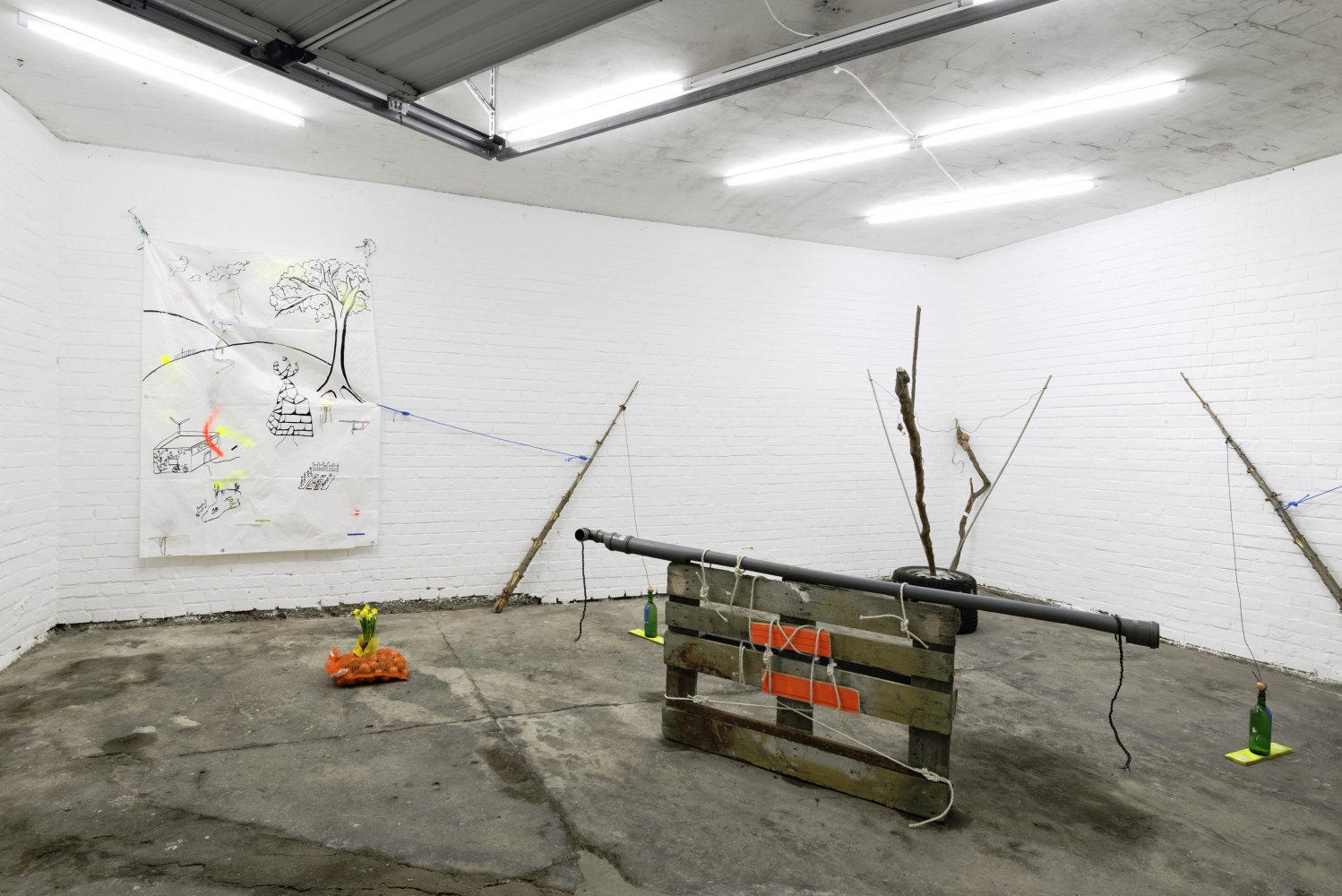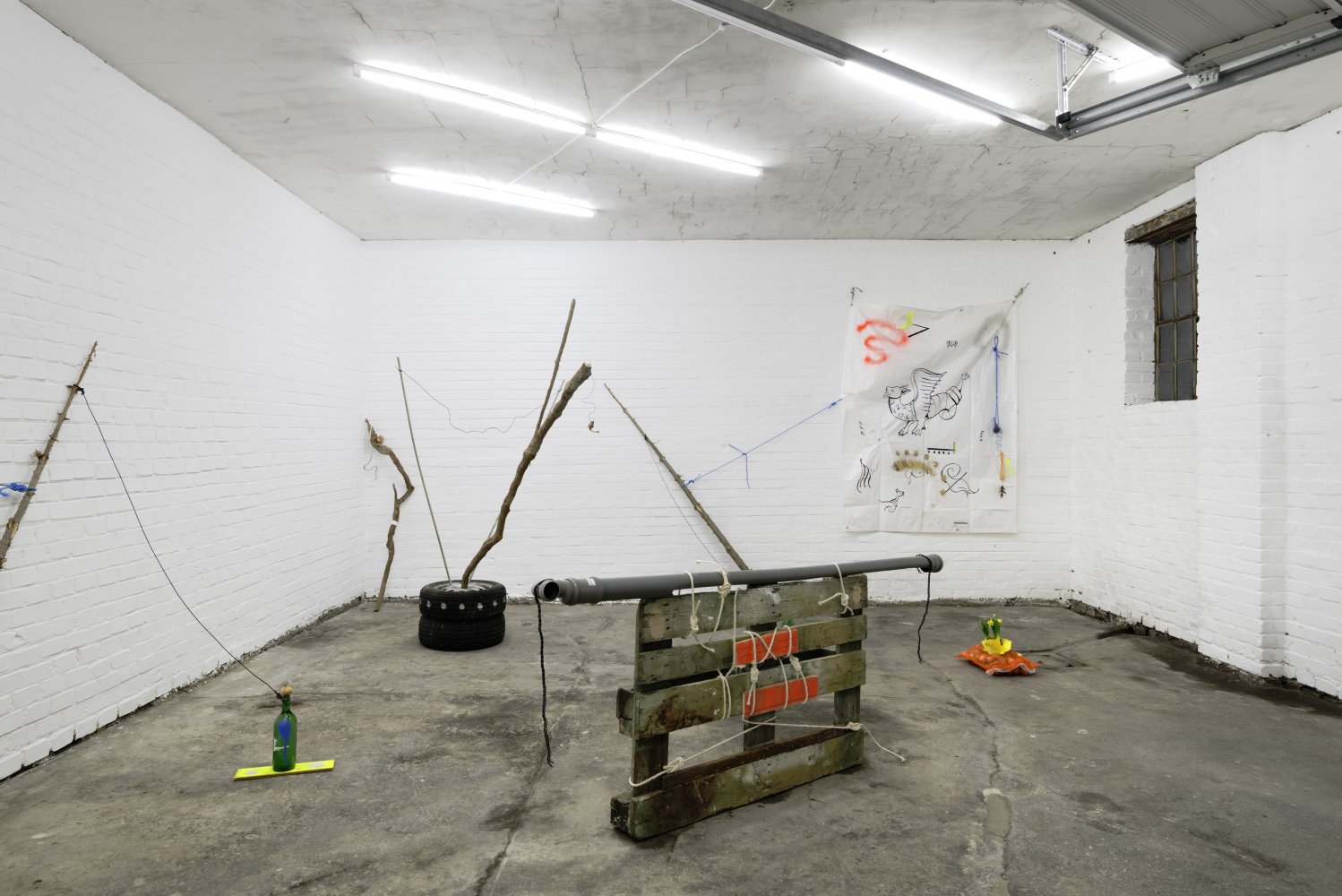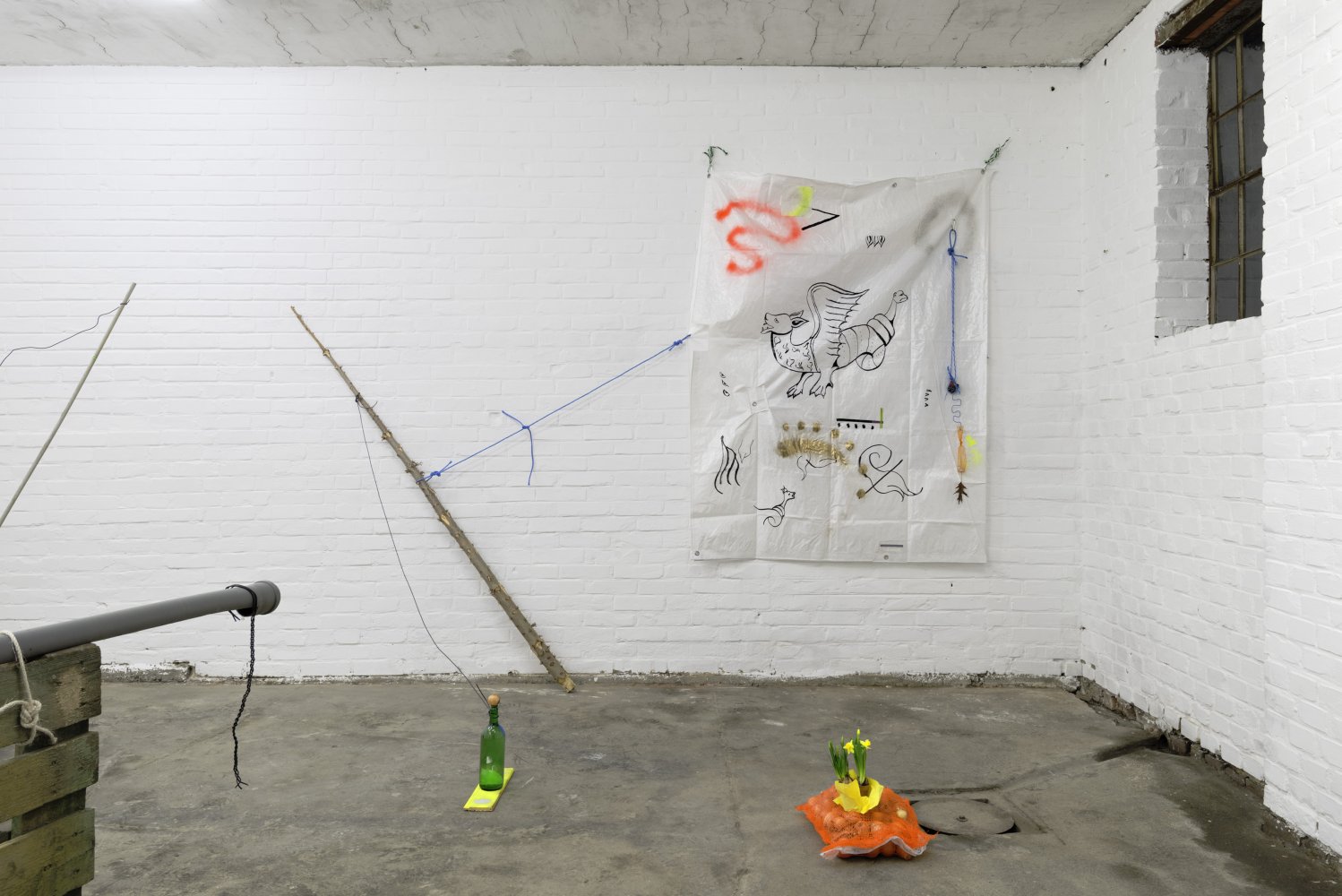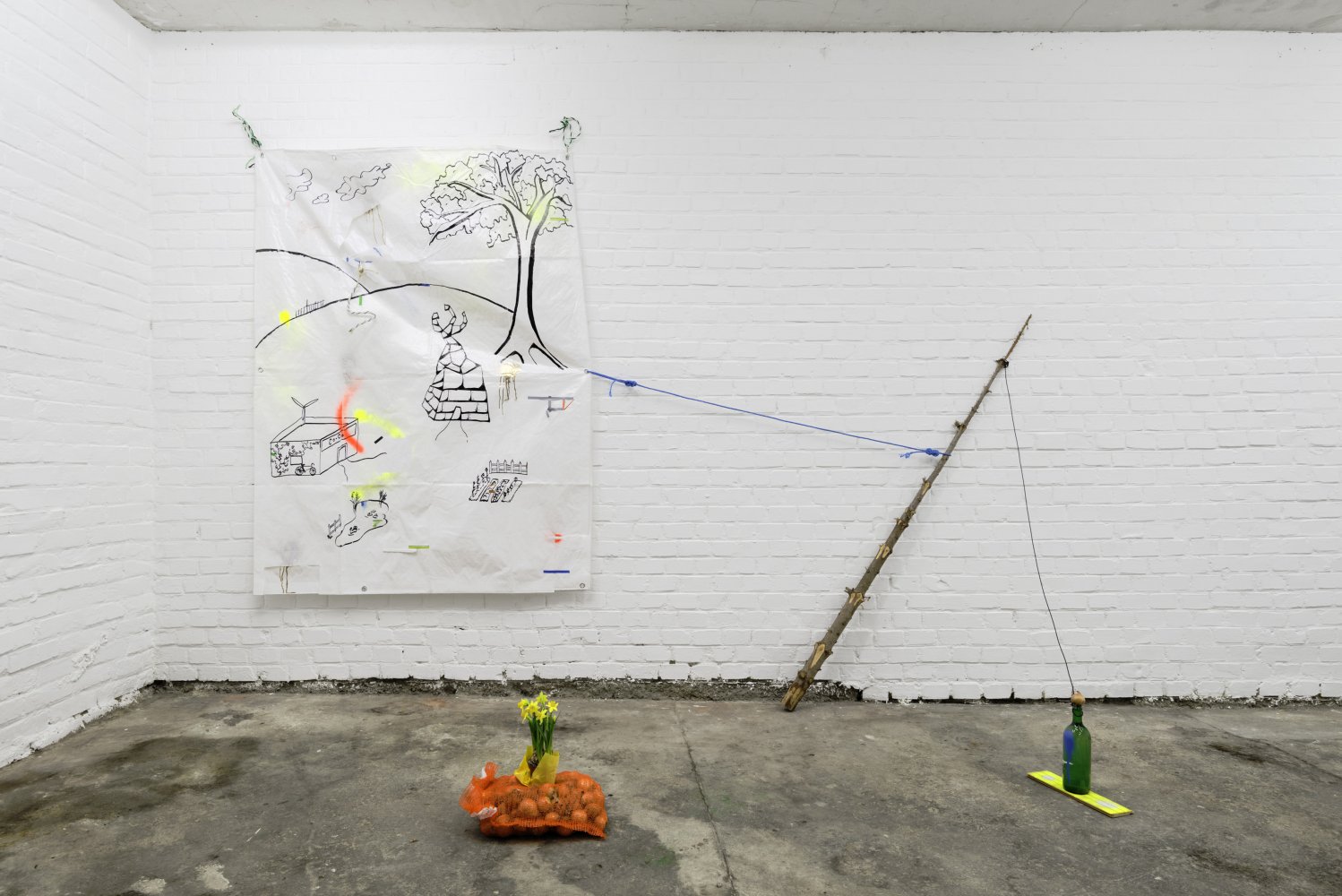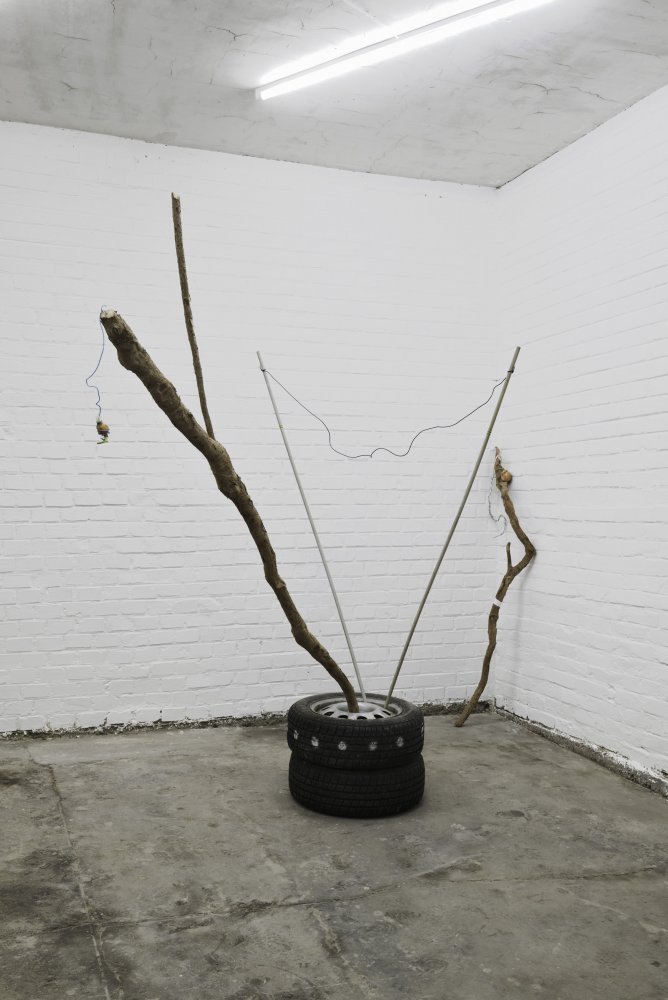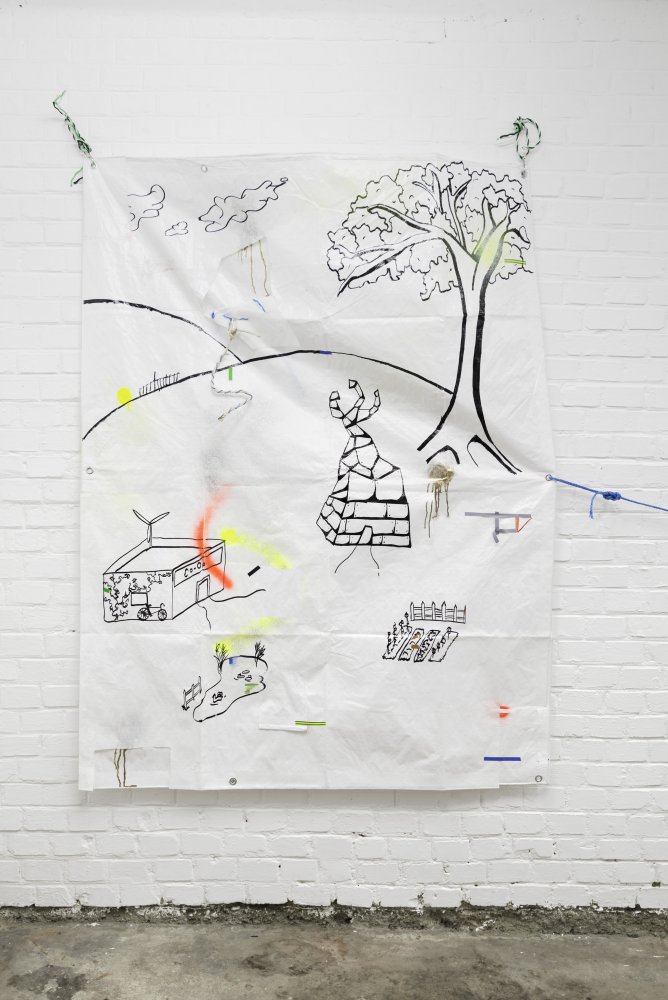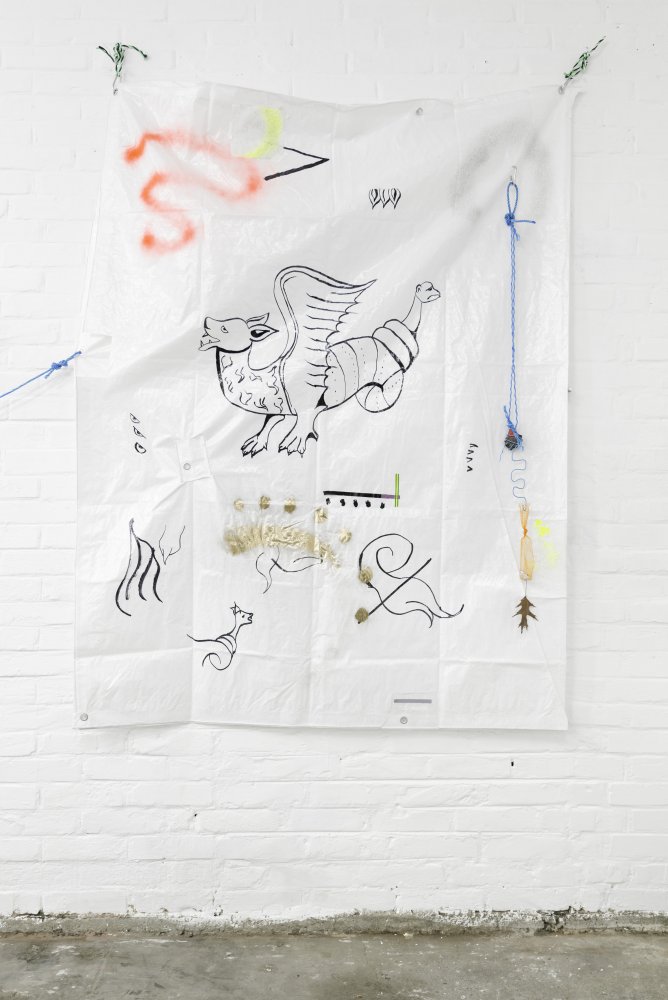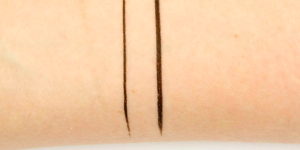London-based artist and writer Caspar Heinemann had a solo show at Vienna’s Kevin Space that ran from February 23 to March 20 titled nothing is the end of the world they made. Heinemann was the new curatorial collective’s first artist in residence at the space and they made a show by summoning and foraging the traces of material and semiotic references in the found objects that occupied the garage building at the former butchers, and all the invisible things produced in between.
A dragon is drawn on a plastic tarpaulin, which is held on a wall like a flag outside a child’s den by a piece of blue rope strung between a high corner and a large wooden stick. The stick is maybe what a child would find in a clearing and deem a big stick, similar enough to a tree but light enough to carry and bring back to base for building with. Accompanying the dragon are pretend flames, spray painted on in a way that might go a little like: ‘how do I make this fire in my mind exist on this flat surface’. And so in one wavy action, like a flame that waves in the air, fire is applied.
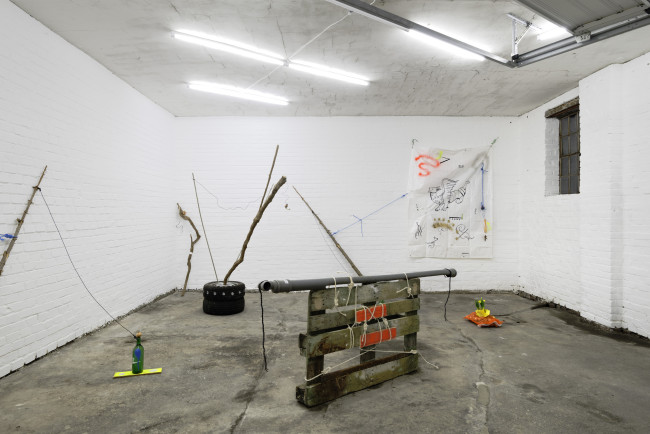
Opposite is a similar work, on more tarpaulin decorated with the same range of materials and mediums, this time showing at its core —or theme, as was the dragon in the dragon piece —a stone house whose stone chimney transforms the drawing tentatively but also clearly and intentionally into a tree house. The ‘tree house’ is the main item and it is bigger than its smaller surrounding illustrations, which act like flickering pieces of attention or memory that have been brought about by Heinemann thinking about a tree house.
The tree house and dragon (and its wave of fire to an extent, too) become objects in the show, but not necessarily in the room. They are indecipherably [but maybe tied down to]: thing, theme, trope, totem, illustration, figure-head and symbol —without the offer of actual meaning with which to read the show as a whole in. As a list, this feels somehow akin to Heinemann’s way of introducing statements in the aforementioned text: “Anyway, elsewhere, just, and because.”

The tree house piece is also held by a friendly wooden stick, and presumably then, in the space, the two paintings and their significant others (rope, sticks) create an inclusive arc space where the sticks act like a pair of arms outstretched, mirroring each other and forming a semi-circle. Heinemann has made it so you can’t feel clearly whether this is a pleasant semi-circle of safely chained memories or whether it is being held together, un-happily.
In the middle of the room is a wooden pallet, on its side. It is held tightly in the eye of its beholder because of an additional layer of thinner scarlet red wood added over its centre part. Equally bashful and vivid Heinemann has given nothing is the end of the world they made a middle, or a fire, or a bright memory in the centre of an exhibition view that gathers all that is foraged into one scene.**
Exhibition photos, top right.
